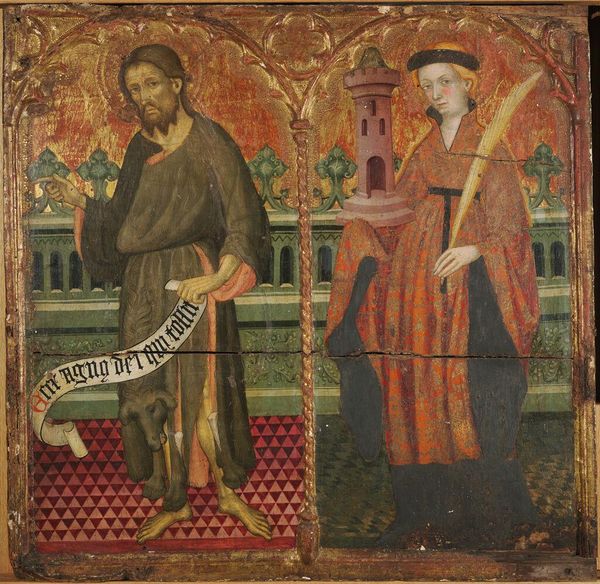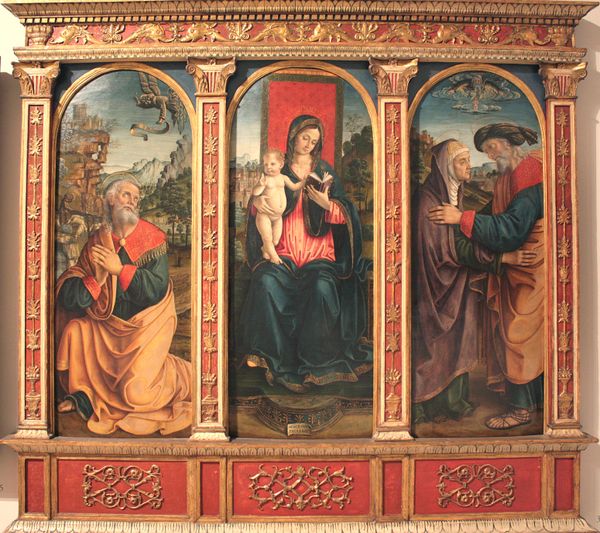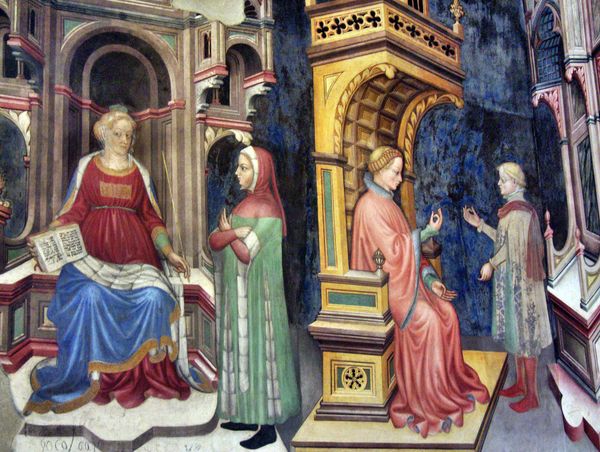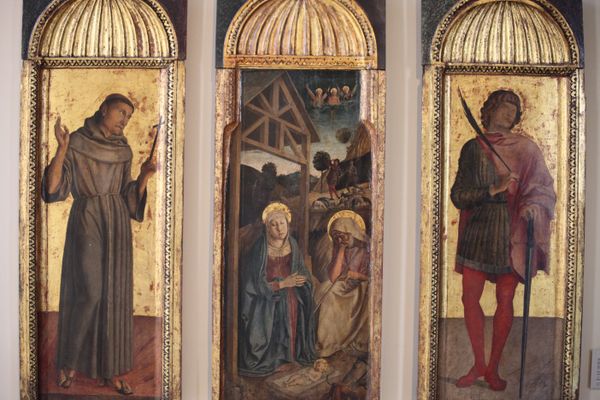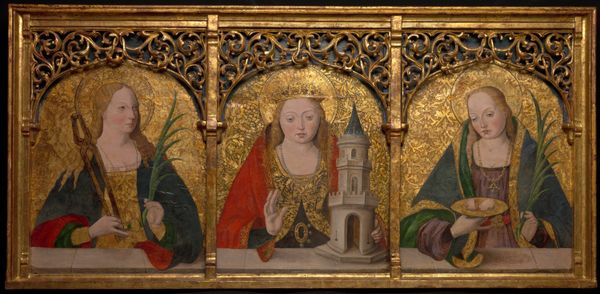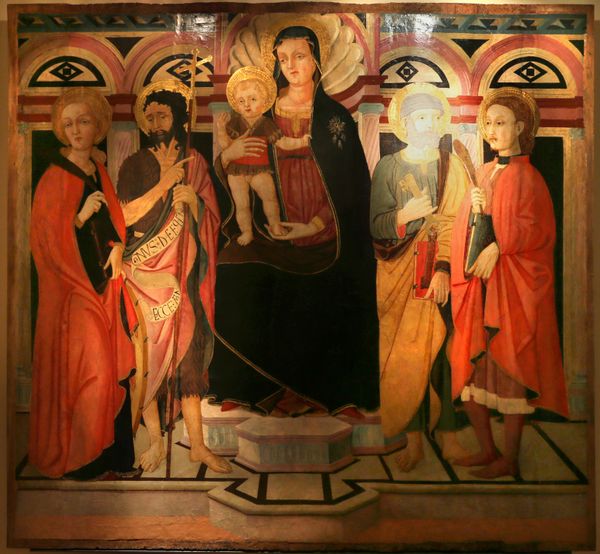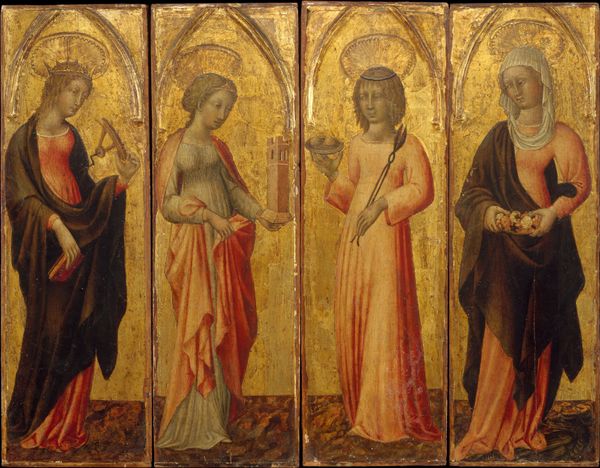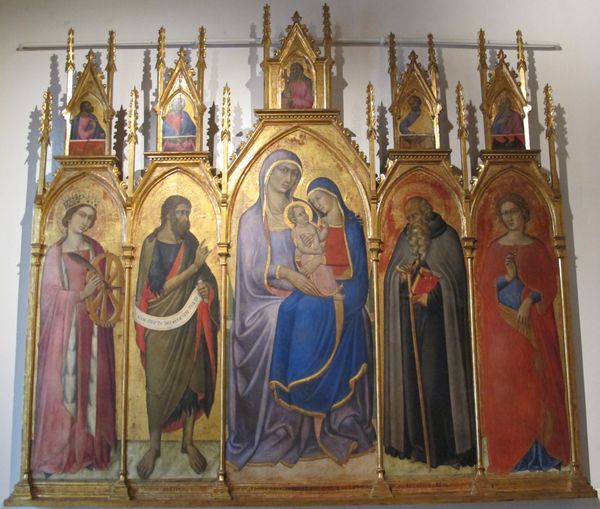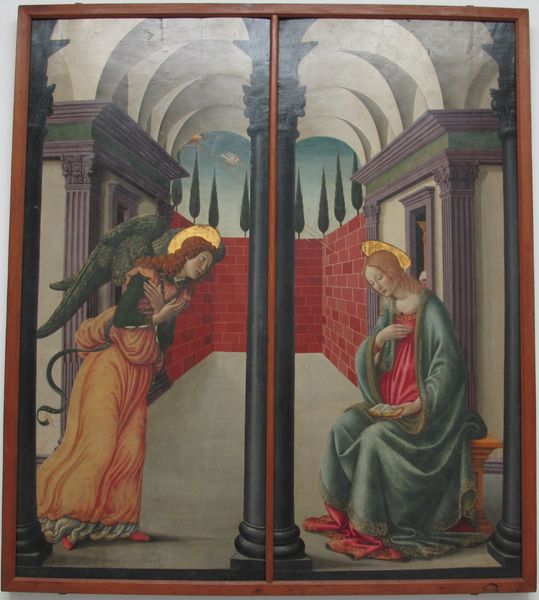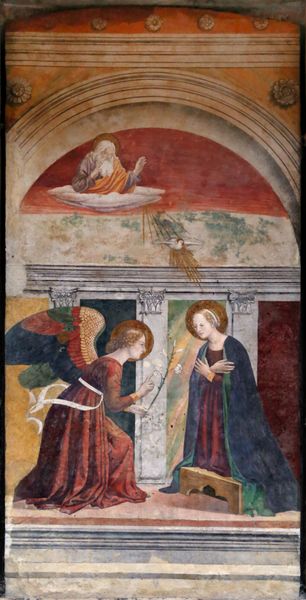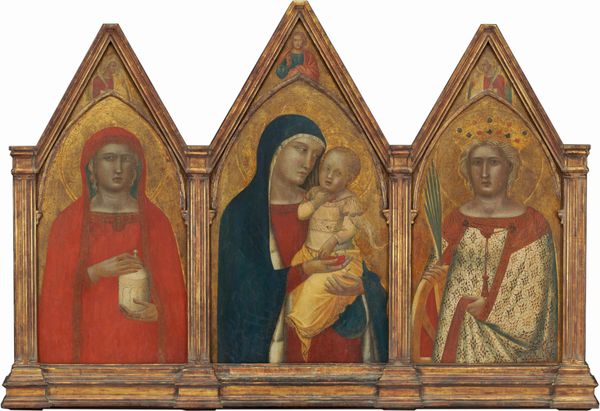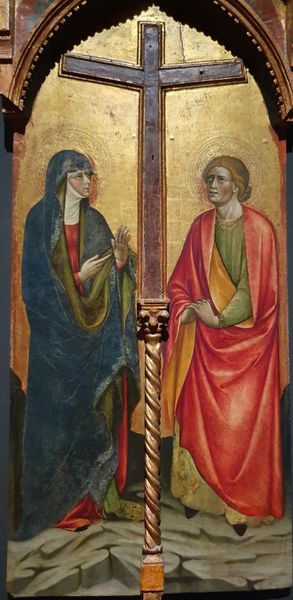
Predella pane with Saint Bridget, Saint Christopher, and Saint Kilian from Retable 15th century
0:00
0:00
panel, tempera, painting
#
portrait
#
medieval
#
panel
#
water colours
#
tempera
#
painting
#
figuration
#
oil painting
#
genre-painting
#
history-painting
#
early-renaissance
#
watercolor
Dimensions: 25 x 41-1/2 in.
Copyright: Public Domain
Editor: This is a 15th-century predella panel with Saint Bridget, Saint Christopher, and Saint Kilian, made by Domingo Ram. It’s tempera on panel and housed at the Metropolitan Museum of Art. It strikes me as quite formal; each figure seems carefully posed and contained within its own architectural frame. What are your initial observations? Curator: The composition adheres to a strict, almost geometric order. Note how each saint occupies a distinct panel, separated yet united by the overarching gilded framework. Saint Bridget's verticality, emphasized by her posture and the lilies, contrasts effectively with the more grounded and striding figure of Saint Christopher. Saint Kilian on the right offers a serene counterpoint. Editor: I see the contrast now. The color palettes also seem deliberate, with the reds and greens of Saint Bridget echoing, but also differing from, the blues and golds of Saint Kilian. Do these color choices have a particular significance, or is it mainly about visual balance? Curator: Significance, perhaps, lies in their juxtaposition. Color here acts as a formal element, creating harmony and variation simultaneously. Consider how the artist modulates the tempera, building layers to achieve depth and luminosity. Editor: It's interesting how the landscape in the central panel of Saint Christopher contrasts with the more stylized backgrounds flanking it. Curator: Indeed. The landscape serves less as a realistic depiction and more as a symbolic stage. Notice how the artist flattens perspective, drawing our eye toward the figures themselves. What effect do you think that flattening has? Editor: It makes the figures more prominent and emphasizes their iconic nature rather than trying to create a realistic scene. Thanks, that was helpful. Curator: Indeed. The formalism encourages us to look closely at each component—line, color, shape—and understand their interconnectedness in creating meaning. A fruitful examination, I believe.
Comments
No comments
Be the first to comment and join the conversation on the ultimate creative platform.

